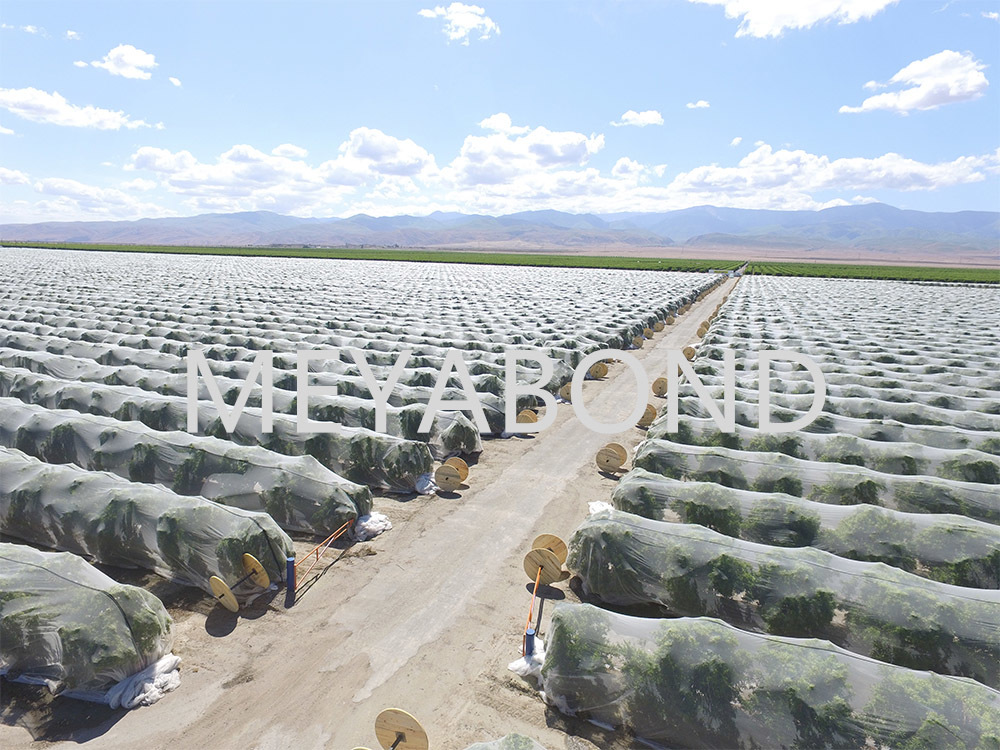Why Every Farmer Needs Anti Hail Net Plastic in Roll for Crop Protection
Introduction: Understanding the Importance of Crop Protection
In today’s unpredictable climate, farmers face numerous challenges that threaten their crops. One of the most devastating risks is hail damage, which can obliterate a season's hard work in mere moments. To combat this threat, **Anti Hail Net Plastic** has emerged as an indispensable tool in modern agriculture. This article delves into the reasons every farmer should consider incorporating this protective measure into their farming practices.
What is Anti Hail Net Plastic?
Anti Hail Net Plastic is a specialized agricultural product designed to shield crops from hailstones and other adverse weather conditions. Made from high-density polyethylene (HDPE), these nets create a protective barrier that minimizes physical damage to plants while allowing sunlight and rain to penetrate. Available in rolls, these nets are versatile and can be adapted to various crop types and farm layouts.
The Composition of Anti Hail Net Plastic
The materials used in Anti Hail Net Plastic are critical to its performance. The **HDPE** fibers are UV-stabilized, ensuring longevity and durability in harsh weather conditions. Additionally, the nets are designed with specific mesh sizes that provide adequate coverage without obstructing essential sunlight, air circulation, and moisture absorption.
Key Features and Benefits
1. **Durability**: Anti Hail Net Plastic is resistant to wear and tear, which means it will last through multiple seasons.
2. **Light Transmission**: The mesh design allows for optimal light penetration, facilitating photosynthesis and healthy crop growth.
3. **Water Permeability**: These nets do not impede water flow, ensuring that rain can reach the soil and crops beneath.
4. **Easy Installation**: Farmers can quickly install roll nets, making them an efficient choice for large-scale agriculture.
Why Hail Protection is Crucial for Farmers
Hail can cause catastrophic damage to crops, resulting in significant financial losses. The following points highlight why investing in hail protection is essential for farmers:
1. Economic Impact of Crop Loss
The financial ramifications of hail damage can be staggering. A single hailstorm can wipe out entire fields, leading to lost income and increased operational costs due to replanting and recovery efforts. By utilizing Anti Hail Net Plastic, farmers can mitigate these risks and protect their investments.
2. Increased Crop Yields and Quality
Protective measures such as anti-hail nets not only safeguard crops from immediate damage but also promote healthier growth. Crops that are shielded from hail can yield higher quantities and superior quality produce, contributing to overall farm profitability.
3. Insurance Benefits
Many insurance companies recognize the use of protective nets as a proactive measure against crop loss. This can lead to lower premiums and better coverage options for farmers who invest in Anti Hail Net Plastic.
How to Choose the Right Anti Hail Net Plastic
Selecting the appropriate Anti Hail Net Plastic is crucial for maximizing its protective capabilities. Here are several factors farmers should consider:
1. Assessing Crop Type and Growth Stage
Different crops have varying requirements for protection. For instance, young seedlings may need tighter mesh to guard against smaller hailstones, while mature plants might require more robust nets. Farmers should evaluate their crops' specific needs before making a purchase.
2. Understanding Local Weather Patterns
Farmers should analyze their region's weather history to determine how frequently hail occurs and the severity of such events. This information can guide the selection of net thickness and durability.
3. Mesh Size and Density
The mesh size of Anti Hail Net Plastic plays a significant role in its effectiveness. Finer mesh can offer better protection against smaller hailstones, while larger mesh may be more suitable for larger crops. It’s vital to strike a balance between protection and allowing necessary environmental conditions for plant growth.
Installation and Maintenance of Anti Hail Net Plastic
Proper installation and maintenance of Anti Hail Net Plastic are crucial for ensuring optimal performance.
1. Installation Techniques
Farmers should follow specific guidelines for installing anti-hail nets to ensure maximum protection. Here’s a step-by-step approach:
- **Preparation**: Clear the area of debris and assess the layout for the net installation.
- **Anchoring**: Use sturdy posts or stakes to secure the net.
- **Stretching**: Ensure the net is taut to prevent sagging, which could lead to damage during strong winds.
- **Adjustment**: Regularly check and adjust the net as crops grow.
2. Regular Maintenance Practices
To prolong the lifespan of Anti Hail Net Plastic, farmers should regularly inspect for damage, clean debris, and ensure that the installation remains secure. If any sections are torn, patching or replacing them promptly is essential to maintain effectiveness.
Case Studies: Success Stories of Farmers Using Anti Hail Net Plastic
To illustrate the benefits further, let’s examine a few success stories from farmers who have implemented Anti Hail Net Plastic in their operations.
1. Local Vineyard Success
A vineyard owner in a hail-prone region installed anti-hail nets and reported a **30% increase** in grape yield compared to the previous year. The nets not only protected the grapes from hail but also improved overall fruit quality.
2. Organic Vegetable Farm Experience
An organic vegetable farm faced repeated hail damage over several seasons. After investing in Anti Hail Net Plastic, the farmer noted a significant reduction in crop loss and was able to maintain a steady supply for local markets, enhancing profitability.
Cost Considerations of Anti Hail Net Plastic
Understanding the financial implications of Anti Hail Net Plastic can help farmers make informed decisions.
1. Initial Investment vs. Long-term Benefits
While the upfront cost of purchasing anti-hail nets may seem substantial, the long-term benefits can far outweigh these initial expenses. Protecting crops from hail can save thousands in potential losses, making it a cost-effective solution.
2. Availability and Pricing
Anti Hail Net Plastic is widely available through agricultural suppliers. Prices can vary based on mesh size, thickness, and roll length, but it’s essential to compare options to find the best fit for specific agricultural needs.
FAQs about Anti Hail Net Plastic
1. How does Anti Hail Net Plastic protect crops?
Anti Hail Net Plastic acts as a shield against hailstones, preventing them from directly hitting the crops while allowing sunlight and rain to nourish them.
2. Can Anti Hail Net Plastic be reused?
Yes, with proper maintenance and care, Anti Hail Net Plastic can be reused for several seasons. Regular inspections help ensure it remains effective.
3. Is it suitable for all types of crops?
Anti Hail Net Plastic can be used for various crops, from fruits and vegetables to ornamental plants, though specific mesh sizes may be more suitable for particular crops.
4. How do I install Anti Hail Net Plastic?
Installation involves clearing the area, anchoring the net securely, stretching it taut, and regularly checking for any adjustments needed as crops grow.
5. What are the environmental impacts of using Anti Hail Net Plastic?
Anti Hail Net Plastic is designed to be UV-stabilized and durable, which minimizes waste. However, farmers should consider proper disposal methods at the end of its life cycle to mitigate environmental impact.
Conclusion: The Future of Crop Protection
As climate patterns become increasingly erratic, the need for effective crop protection solutions like **Anti Hail Net Plastic** is more critical than ever. By investing in this innovative product, farmers can safeguard their crops against the unpredictable elements, ensuring a more productive and profitable agricultural future. This protective measure not only enhances crop resilience but also contributes to the sustainability of farming practices in the face of climate change.
Key words:
Related News
CONTACT US
Email: sales8@meyabond.com
Tel: +8618911966213
No.3 Yard, ZhongHe Road, 100071,FengTai District, Beijing, China
Email: sales6@meyabond.com
Tel: +8618911963856
No.3 Yard, ZhongHe Road, 100071,FengTai District, Beijing, China
















